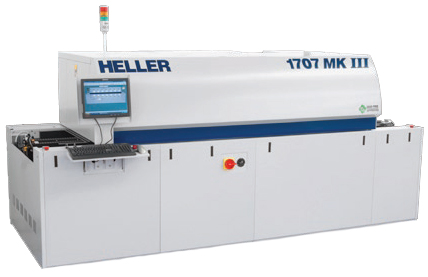SMT Assembly — Precision at the Micron Level
New England EMS since 1982. Prototypes, NPI, and Production Builds to IPC-A-610 / J-STD-001
• Medical
• Industrial
• R&D Prototyping
• Low-Volume High-Reliability
High-Mix, Low-Volume Specialists
Turnkey or consigned. Risk-reduction runs and rapid prototypes that de-risk production.
Modern SMT Line
Mycronic MY300 pick-and-place, fine-pitch/QFN/BGA, reflow profiling for low voiding on thermal pads.
Quality Built-In
3D AOI + X-ray inspection, ESD controls, builds to IPC-A-610 / J-STD-001 Class 2/3.
Engineering & DFM
Stencil/aperture strategy, panelization, BOM scrubs, and supply options to keep you on schedule.
Rapid Turnaround
Prototypes in days, not weeks. Optimized workflow and component sourcing for speed and accuracy.
Complete EMS Integration
Seamless transition from SMT to Through Hole, Box Build, and test for a true turnkey experience.
Process Control That Scales from Proto to Production
- Printing: SpeedPrint SP710 with twin roving cameras for precise alignment and consistent paste deposition.
- Placement: Mycronic MY300 SX-15 & MY200 LX-14 for fine-pitch/QFN/micro-BGA with high throughput.
- Reflow: Heller 1707 MKIII for uniform thermal profiles and reliable solder joints.
- Inspection: Mirtec MV-6 Omni 3D Moiré + multi-angle projection for 01005 and solder-joint quality.
- Traceability & Rework: AOI/X-ray records, profile data, and certified rework available on request.
Built for High-Reliability Applications
Quality, Documentation & Compliance
- Builds to IPC-A-610 and J-STD-001 (Class 2/3 per spec)
- ESD controls, lot traceability on request, traveler/route compliance
- First Article, AOI/X-ray reports, reflow profiles archived per program
- Customer-specific labeling, serialization, and acceptance criteria
Request a Quote
Attach BOM, Gerbers, assembly drawings, and any special process notes. We’ll respond within one business day.
SMT FAQ
What files do you need for SMT quoting?
Which file formats for Centroid / pick-and-place are preferred?
What stencil guidance do you recommend (apertures, thickness, step-downs)?
Can you place 01005 and micro-BGA?
How do you control reflow quality and voiding on QFNs/BGAs?
What PCB finishes work best for fine-pitch?
Lead-free vs. leaded?
Do you offer cleaning or strictly no-clean?
What are your panelization and fiducial requirements?
Board size and thickness limits?
MSL handling and baking of moisture-sensitive parts?
First Article (FAI) and inspection reporting?
Can you rework BGAs or fine-pitch ICs?
Do you support conformal coating and potting?
RoHS/REACH and material compliance?
What’s a typical prototype lead time?
Can you work from customer-supplied kits?
How should I package boards and parts for shipment?
Do you provide test and programming?
What happens if an issue is found during build?




Since 1982 • Norwood, MA • IPC-A-610 / J-STD-001 (Class 2/3)






